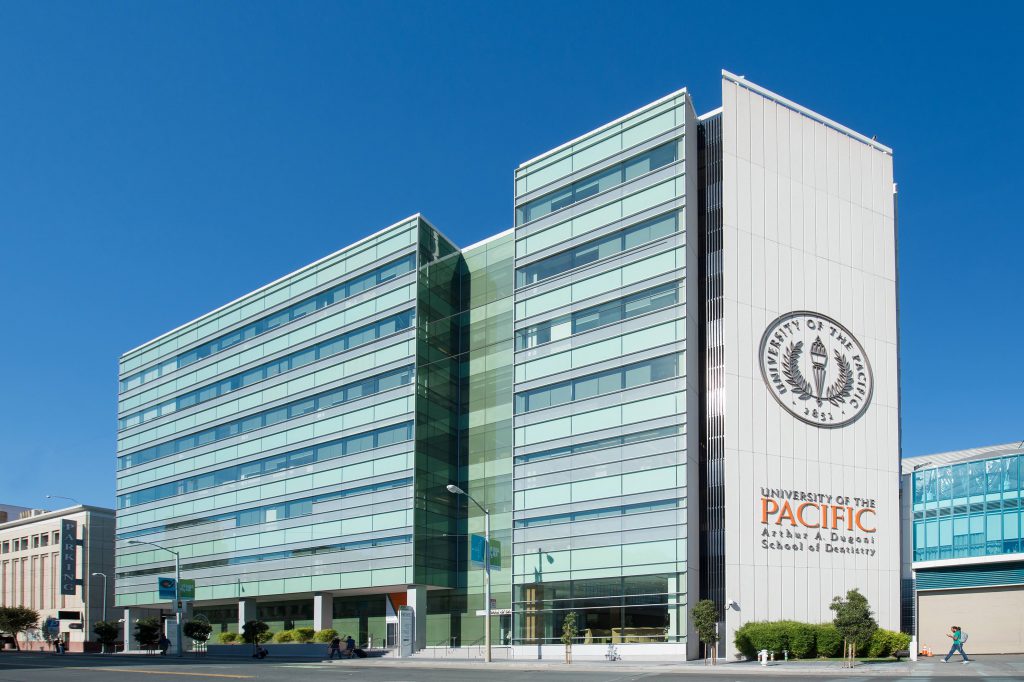The University of the Pacific Arthur A. Dugoni School of Dentistry is collaborating with Stanford University on an ambitious program aimed at bridging the gap between biomedical research and clinical practice.
A $3.8 million grant was recently awarded by the National Institute of Dental and Craniofacial Research of the National Institutes of Health to fund the Pacific-Stanford PRIMED Program.
New knowledge on oral disease prevention and clinical care is constantly emerging, but much of it does not make it into clinical practices. The five-year grant will allow Pacific to train the next generation of clinical oral health researchers who are equipped to translate research into practice.
There is also a growing need for more clinician-scientists in the workforce.
“As a clinician, it’s profoundly gratifying to help one patient at a time, but as a researcher we can help populations at a time,” said David Lam, professor and chair of the department of oral & maxillofacial surgery and associate dean for medical integration.
Lam is co-leading the grant with Rebecca Moazzez, professor and chair of the department. of preventive and restorative dentistry and director of the Center for Innovation and Translation at Pacific and two researchers from Stanford—Ruth O’Hara, professor and senior associate dean for research and John Sunwoo, professor and associate dean for academic affairs.
“We are extremely excited to formalize our research and educational collaboration with our colleagues at Dugoni,” Sunwoo said. “We have collaborated informally for several years with Dr. David Lam and are thrilled to be part of this new initiative to train the next generation of oral health clinician-scientists.”
The partnership between the schools draws on Pacific’s strength in dental education and training and Stanford’s robust clinical and translational research.
“Putting the two together, we synergistically help each other,” Lam said.
The program will transform dental education at the Dugoni School by making clinical research training mandatory for all first-year students and residents.
“Our students will be in a different league compared to dental graduates around the country,” Moazzez said. “Not only will they have their excellent dental training, but they will now also receive excellent clinical research training, together with a certificate from Stanford University, which will equip them for practice-based research here at the dental school, and in the future, in their private practices.”
Research studies conducted as part of the training will focus on three areas: oral cancer, sleep medicine, and developing a Pacific-Stanford biobank.
The oral cancer study is aimed at detecting cancer earlier. Sleep apnea research will expand work currently underway at the Dugoni School to evaluate the effectiveness of new treatment options. The biobank project involves collecting blood, saliva, tissue and demographic information to create a robust collection of patient samples.
“At every patient appointment, students will be trained on obtaining informed consent and collecting saliva or blood samples,” Moazzez said. “The initial advantage is bringing research culture into the day-to-day operations of the clinic. The collected data and samples will then help drive future research projects and collaborations.”
The expanded focus on research at the Dugoni School will also help advance the work of the University of Pacific Center for Innovation and Translation located on the San Francisco Campus. The center’s goal is to support students, residents, and faculty, so that clinical research becomes the easiest thing a clinician can do.
The center also aims to build on existing and develop further collaborations with commercial companies and startups to test new products and innovations and facilitate translation of innovation into clinical practice.













